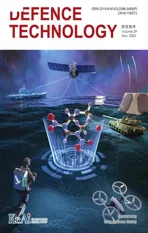AI-based small arms firing skill evaluation system in the military domain
2023-12-07RezoanulHafizChandanNusratSharminMuhaiminBinMunirAbdurRazzakTanvirAhamadNaimTasneemMubashshiraMokhlesurRahman
Rezoanul Hafiz Chandan,Nusrat Sharmin,Muhaimin Bin Munir,Abdur Razzak,Tanvir Ahamad Naim,Tasneem Mubashshira,Mokhlesur Rahman
Department of Computer Science and Engineering, Military Institute of Science and Technology, Dhaka, Bangladesh
Keywords: Machine learning Processing Firing system Artificial intelligence
ABSTRACT Evaluation system of small arms firing has an important effect in the context of military domain.A partially automated evaluation system has been conducted and performed at the ground level.Automation of such system with the inclusion of artificial intelligence is a much required process.This papers puts focus on designing and developing an AI-based small arms firing evaluation systems in the context of military environment.Initially image processing techniques are used to calculate the target firing score.Additionally,firing errors during the shooting have also been detected using a machine learning algorithm.However,consistency in firing requires an abundance of practice and updated analysis of the previous results.Accuracy and precision are the basic requirements of a good shooter.To test the shooting skill of combatants,firing practices are held by the military personnel at frequent intervals that include 'grouping' and 'shoot to hit' scores.Shortage of skilled personnel and lack of personal interest leads to an inefficient evaluation of the firing standard of a firer.This paper introduces a system that will automatically be able to fetch the target data and evaluate the standard based on the fuzzy systems.Moreover it will be able to predict the shooter performance based on linear regression techniques.Thereby,it compares with recognized patterns to analyze the individual expertise and suggest improvements based on previous values.The paper is developed on a Small Arms Firing Skill Evaluation System,which makes the whole process of firing and target evaluation faster with better accuracy.The experiment has been conducted on real-time scenarios considering the military field and shows a promising result to evaluate the system automatically.
1.Introduction
Efficiency in small arms firing is the most fundamental skill for an individual serving in military [1].Weapon training,specially training on small arms handling encompasses a major part of training curricula for newly inducted officers and men in military.Because small arms like rifles,pistols or submachine guns are portable firearms which are treated as individual weapon.Armed forces of any country plans and conduct training in such a way that each individual serving in military earns mastery on his personal weapon.Coaches and trainers teach and guide the new inductees so that they become skilled shooter in course of time.Different weapon training institutions have their own training modalities to conduct training on firing,evaluation and record keeping.The modalities followed during the training is mostly guided by human trainer and coaches who evaluate the errors and mistakes committed by the firer.They also guide and motivate them to become a good shooter following typical approaches followed in military.The use of Artificial Intelligence can be a very useful tool for evaluating firing skill and analyzing shortcomings of the firer.Thereby it will enable tracking sequential skill development of a firer which will ease up the professional responsibilities of a trainer or coach.To sum up the whole military firing domain can be divided into two parts:(i)Firing Evaluation System(FES)and(ii)To analysis the performance of the firer.FES consists of target scoring and error in grouping part and the performance analysis part,which can be performance measure and performance prediction.To simplify the whole concept in this paper,we have divided the discussion based on this two main part,FES and the firer performance analysis (see Figs.5 and 6).
Traditionally training on firing in military institutions follows its own typical methods and drills.The evaluation and record keeping methods are partially or entirely manual [1].A package of drills is followed in the firing range for smooth conduct of the firing and to ensure safety and security of all.As soon as firing of a group of soldiers is completed,they along with the evaluators and coach goes for target checking.Marks and points are calculated manually by counting total number of shots on the target and by measuring distance among bullet impact points using a measurement scale.Thereafter,the result of each firer is manually recorded to a database or in registers.Here the difficulties arise because,though the earned points of each firer is recorded but the pattern of shoots cannot be recorded which is a vital information for firer's rectification of error and further development.Firing pattern assists a firer in comprehending his own mistakes as well as acts as a tool to fix them.By continuous analysis of the firing pattern,a person can minimize his mistakes and errors during firing and can takes deliberate measures to overcome the issues.In the existing process of evaluation,the firer remains unaware of his past mistakes and lose focus to improve his firing efficiency.Again,the existing evaluation and record keeping process is time consuming,effort centric and less efficient.Thus,a computer aided automated evaluation and record keeping process will be useful for firing skill development of the military personnel.
There is a vast use of image processing techniques and machine learning in sports domain [2-7].In literature,the performance of the sportsmen in various sports have been predicted through machine learning.Even in different firing competitions image processing techniques are widely used to calculate shooting scores.There are examples of performances measurement and prediction for sportsmen with certain factors as input.In the Olympics,the biathlon performance [8]is predicted using machine learning and related algorithms.The machine is initially fed with previous years'firing data.Thereafter the factors impacting shooting performance are studied using exploratory data analysis.This assists in various machine learning models for predicting future hits and misses.But considering the available open sources information it can be said that machine learning has not been used yet to measure or predict firing performance of a soldier.
The performance measure is therefore of utmost importance to guide an evaluator in understanding the firing pattern of a firer.Side by side,it assists a firer in comprehending his own mistakes as well as acts as a tool to fix them.It carefully compares the individual attributes within a group and works as a key element to standardize the performance.By continuous analysis of the firing pattern,a person minimizes the mistakes and errors he/she can commit in the process and takes deliberate measures to overcome the issues.To our knowledge,no specific literature study based on the performance of the military using machine learning techniques has been found.
This paper will mostly emphasize automating the current firing evaluation system and contribute to the following:
(1) Development of an automatic target scoring system as well as various error detection system using Image Processing and machine learning techniques from a real-time data-set.
(2) Proposal for a concise measurement of firer performance with comprehensive relation among various performance criteria using the fuzzy logic system.
(3) Analysis of an individual's firing performance and predict the future outcomes using the linear regression model.
We divided the rest of the paper in to seven sections.Section 1 attempts to provide a brief overview of the military firing system to assimilate the readers with the process.Section 2 provides a review on related works and Section 3 describes in detail the methodology followed to implement the idea of the project.Section 5 shows the results of the proposed system as per the prototype formulated.Section 6 enumerates the evaluation data of the prototype based on user feedback studies.Section 7 will have the concluding remarks on the whole paper.
2.Military firing system
Skill in firing is always considered as an important trade of a good soldier.An organized and well-structured training package is followed to develop the firing skill of a soldier during his induction training in the military.Even after his induction in the military unit,he needs to go through regular training to upkeep his quality as a good firer.The firing training includes delivery of the knowledge about the weapon and requirement of a good shot.Not only knowledge but also a good built-up of hand muscle and capability of following firing cycle efficiently is a must to be a skilled firer.So,condition of the weapon and capacity of the firer both affect the precision and accuracy of the firing results.
Under ideal condition,if a weapon is fired with a correct aim,the bullet should hit the bull on the target.But this does not happen due to two basic reasons: either the weapon is not zeroed or the fault remains with the firer.If a weapon is not properly zeroed,then a good firer may bring accurate firing on the target which may not have precision.A weapon is zeroed by conducting grouping fire on the target by a good firer.A group is the collective pattern of the shots fired aiming each time at a single point,without any major changes in firing position.The firer gets the chance of shooting five bullets at the target from a 100-m distance in one shooting session.The size of the group is a measure of a soldier's skill in weapon firing.The smaller the size of the group the more skilled the soldier in firing.
2.1. Firing evaluation system
The firing evaluation system depends on the target scoring and errors in the grouping.Hence We divided this part of the discussion into two parts:(i)Target scoring system and(ii)errors in grouping.
2.1.1.Target scoring system
The maximum distance between the two furthest impacted bullets on the target is the size of the group.If the group size is more than 10 inches,then the fire is declared as wash-out and he is considered to be exposed to errors in following the firing cycle and poor weapon handling.The pattern of impacted bullets on the target of a standard firing is shown in Fig.1.If the group size is 1-4 inches the firer is classified as marksman(Fig.1(a)),if the group size is 5-7 inches,they are classified as first-class firer(Fig.1(b))and if the group size is 8-10 inch,they are called Standard firer(Fig.1(c)).The grouping of fire has a direct relation with the zeroing of the weapons.A perfectly zeroed weapon creates a marksman shot close to the center of the target(also called"bull").A non-zeroed weapon will formulate the same group away from the bull.The error shots are caused mostly due to the non-zeroed weapons apart from the mistakes made by a firer.

Fig.1.(a) Marksman;(b) First class firer;(c) Standard firer.
The grouping of fire has a direct relation with the zeroing of the weapons.A perfectly zeroed weapon creates a marksman shot closure to the center of the target(also called“bull”).A non-zeroed weapon will formulate the same group away from the bull.The error shots are caused mostly due to the non-zeroed weapons apart from the mistakes undertaken by a firer.
2.1.2.Errors on grouping
A firer has to learn and follow some basic principles of firing like steady hold,correct aim,and correct trigger control.A firer has to ensure the correctness of certain aspects while he fires,like correct body alignment with the target,correct sight picture,breathing control,correct trigger press,and follow through.Again,he has to abide by a firing cycle to bring all the shots at the point of aim at the target.The weakness of a firer to follow some firing principles is clearly projected on the target.An experienced firing trainer can easily identify the mistakes of a firer by seeing the pattern of the group created on the target and can guide the firer to correct the mistakes in the subsequent firing practice.
There is four defined pattern of bullets'impact on the target which represents four common errors committed by a firer.These errors are shown with relevant figures in Table 1.Long horizontal error is caused by horizontal movement of the left hand due to for poor holding.Long vertical error caused by wrong breathing control or due to error in alignment of back sight U and front sight tip of the weapon.A bifocal group is created due to excessive stress of the firer on the point of aim or on the front sight tip.Such a group is also created if the firer fails to make the correct trigger pull.If the firer has a number of errors and fails to make the correct hold while firing,then the impacted bullets do not create any pattern on the target.These errors are shown with relevant figures in Table 1 for further assimilation with the errors.

Table 1 Different errors.

Table 2 Fuzzy rules for performance 1.

Table 3 Fuzzy rules for performance 2.
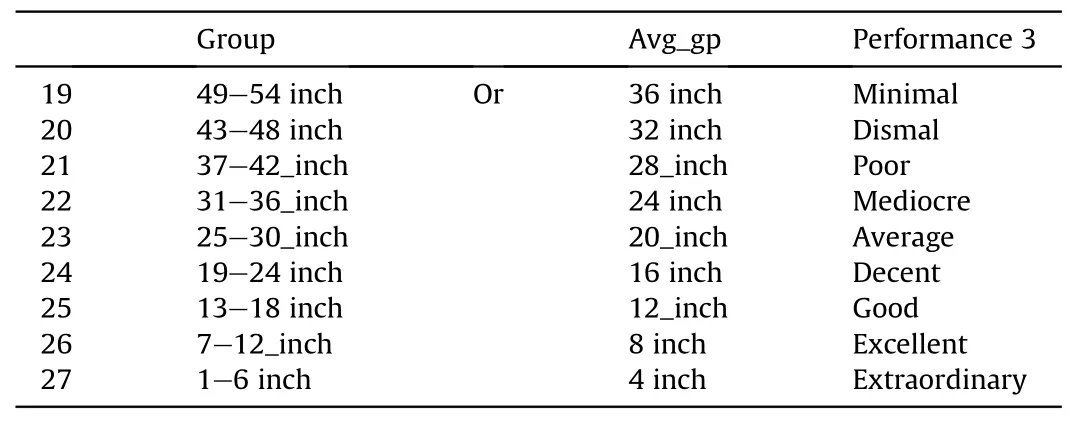
Table 4 Fuzzy rules for performance 3.
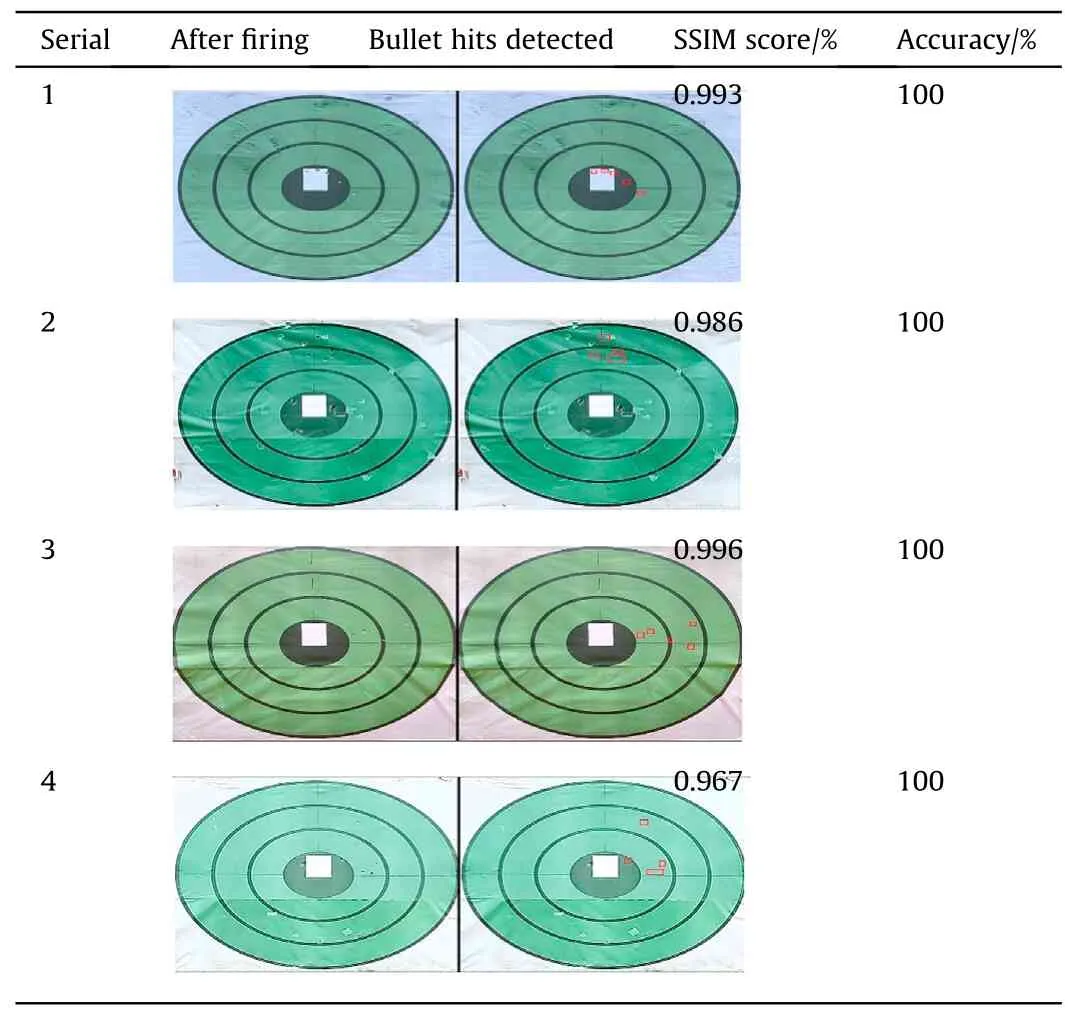
Table 5 Accuracy of bullet hits detection.
2.2. Performance analysis of firer
Methods and techniques to measure the firing efficiency of military personnel are different in countries around the world.Again,based on chronological development and progressive improvement of firing skills,military personnel can be grouped into three categories: trainees,new soldiers,and trained soldiers.In course of time,as the soldiers develop experience and skill in firing they are trained in advanced firing techniques and are encouraged to fire in varying situations with varying ranges.To give them battlefield experience they are trained to fire as a team and adapted through battlefield inoculation training.But,whatever is the state,skill,and group of the firer they are basically evaluated based on two types of firing namely grouping fire and shooting to hit fire.Both these two types of firings are conducted at different distances where the individual fires his personal weapon being at different firing positions,e.g.laying,sitting,kneeling,standing position,etc.Grouping fire is basic teaching for every soldier and is the main tool for judging firing skills.Grouping fire is usually conducted at a 100-m distance on a 3-feet by 3-feet square-shaped target.This type of firing is usually conducted in a lying position.The diameter of a circle containing all five shots of the firer is known as his grouping capacity.Size of the groups for counting points varies basing on the type of weapon used in firing.For rifle firing,if the firer is able to keep all five shots within 4 inches on the target,he gets 5 points.For a group size of 5-7 inch and 8-10 inch 4 and 3-points are allotted respectively.More than 10-inch group is considered as wash-out or fail score.Shoot-to-hit fire is conducted at different distances starting at 300,200,100 and ending at 25-m distance.Soldiers fire their personal weapon being at different positions from different distances and proceed nearer to the target.Targets on which the firer take shots are also different in size and shape for different distances.In case of shoot to hit fire,the firer gets one point for each shoot hitting the target.So,at the end total points are aggregates of points in grouping fire and shoot to hit fire.Rules of counting of points to measure performance is same for male and female soldiers irrespective of their age and service length.However,to encourage and recognize the performance of trainee soldiers or recruit,new soldiers joining the units and female soldiers,they are categorically judged within their peers and best performing among them are rewarded.
3.Related works
Researchers have previously done some works related to the proposed firing skill evaluation system.This section will focus on the previous research works on three main parts: (i) Automatic target score through image processing;(ii) Performance measure through fuzzy system;(iii) Performance prediction using machine learning.
3.1. Firing evaluation system:automatic target score through image processing
Ali et al.[9]proposed a computer vision based automatic scoring system for shooting targets using simple image processing techniques like morphological processing and hysteresis thresholding.Their proposed algorithm achieved 98.3% accuracy tested on 100 images of different number of bullet hits.Another noted research done by Ding et al.[10]proposed a machine vision based scoring system using the back lighting illumination system.Their main success was that,the system could recognize the overlapped holes on real time and therefore,could perform quickly with high accuracy.Ye et al.[11]also developed an autocounting system using some selected techniques of image processing and image recognition.However,with the growing technology of the pattern recognition ellipse fitting algorithm,some researchers have worked with advanced techniques for instance,Soetedjo et al.[12]implemented an embedded camera system and used homography transform.Their system could perform accurately regardless of camera angle and viewpoint.Kusuma et al.[13]have used several image processing techniques like target ring detection,and perspective transform with other traditional techniques.They achieved an accuracy of 91%.
A firer is prone to errors,the majority of the time,which is due to a lack of understanding of how to fix errors.blackIf a firer understands the causes of his errors,he is likely to overcome his limitations [14].Firers’ mistakes and defective weaponry are the two most common causes of errors.Hatamleh et al.designed a lowcost system for visual laser shooting practice system where they tried to overcome these errors using a developed image processing algorithm [15].
There are several sources of dispersion that lead to firer's faults and worsen firing performance in terms of hit probability.blackIssa et al.addressed some of these sources of dispersion but didn't develop any separate mechanism to overcome these issues [16].The cause of faults leading to inaccuracy and dispersion must be recognized to improve firing effectiveness.Ammunition dispersion error,gun dispersion,aerodynamic jump,and aiming error are only a few of them which were addressed by Seotedjo et al.in their research [12].There's also vertical error,horizontal error,bifocal error,scattered error,and so on.
Research Gap.The majority of the aforementioned works were created in a simulated setting rather than a real-world military setting.Additionally,no work has used machine learning to recognize the mistake grouping.
3.2. Firer performance analysis: performance measure through fuzzy system
The average impact position of a shot dispersion is referred to as the mean point of impact(MPI).A shot distribution that places the MPI closer to the target's bullseye aids in high accuracy.On the other hand,accuracy suffers if the rounds are placed too far apart from one another.The primary objective of the firer,in accordance with the study on the causes of delivery mistake conducted by Storhm et al.[17],is to reduce the time between rounds so that the shot distribution approaches the MPI and maintains the MPI around the bullseye.The performance metric for the firer is ultimately influenced by these shot distributions.
Another important parameter precision is defined as the value of the precision parameters,i.e.,stronger precision qualities are represented by smaller hit pattern dimension sizes and lower precision measure values.The average hit is one of the unique aspects of the hit pattern,and it may be computed or visually determined.However,in the case of firing,the term accuracy refers to the relationship between the hit pattern features and the dimensions and attributes of the specified target.Zivkovic et al.[18]designed a non-material high-resolution target acquisition system using IR sensor.They controlled the hardware system with a simple algorithm to determine the precision and accuracy of the firing system.
For determining these performance metrics more accurately,fuzzy logic is being popular day by day.A fuzzy logic system (FLS)[19]is a special mechanism that can manage numerical data and linguistic information at the same time.It's a nonlinear mapping of an input data (feature) vector to a scalar output or converting numbers to numbers which is done through three steps: Fuzzification,Inferencing,and Defuzzification [19].
Research Gap.There are cases where performance characteristics are used for shooting,but nowhere are they used in a way that specifically measures total performance.A fuzzy inference method is never employed to evaluate the performances.
3.3. Performance prediction using machine learning
Performance analysis helps to determine the level of expertise in individual firing.In the case of bullet shooting or firing,the shooting device/weapon handling reflects a greater degree of overall performance.The gun handling aspects of firing are hold,stability,aiming accuracy,triggering cleanness,and time taken on target.Ihalainen et al.[20]conducted a study to discover the most significant factors to determine the performance in elite-level air rifle shooting technique.They came up with four important parameters using regression analysis and Principal component analysis found two more factors.
SVM is a classical supervised learning model that can analyze data and recognize patterns.It is based on statistical learning theory and is widely used to summarize and review research and development works.It can generate highly accurate results for the diagnosis and finding errors.SVM is basically a collection of supervised learning techniques for classification and regression [21].They are members of the generalized linear classification family.SVM has a unique virtue in that it minimizes the empirical classification error while also increasing the geometric margin.As a result,SVM is also known as Maximum Margin classifier.SVM maps the input vector to a higher-dimensional space in which a maximal separating hyperplane is built.It allows Structural Risk Management(SRM)meaning it can tune the capacity of the classifier to the available amount of training data.Thus,SVM can prevent phenomenal overfitting by balancing the complexity of models with their fit to the data.Though there are examples of using SVM to find out employee performances [22]in an organization,there are no instances of using this system to evaluate firing performances.
Regression is a very popular and basic tool for prediction analysis.Regression seeks to answer two questions.First,can an outcome(dependent)variable be predicted using a set of predictor variables?Second,based on the size and sign of the beta estimates,what factors,in particular,are significant predictors of the outcome variable and how do they affect the outcome variable are discussed.Almost every sector of real-world applications has an impact with the solution of regression problems [23].
4.Methodology
The proposed method is carried out in two separate phases in gradual stages.The first phase consists of the generation of scores and detection of various types of errors using machine learning and various image processing algorithms based on real-time images of firing.The second phase consists of performance analysis through Fuzzy Inference System and the linear Regression technique is utilized to predict the future performance probabilities of a fire.
The Whole methodology part has been divided into two parts:
· Phase 1: Firing evaluation system-generation of individual scores and detection of errors.
· Phase 2:Performance analysis of firer has also been divided into two parts: (i) Performance analysis using fuzzy logic and (ii)performance prediction using linear regression.
4.1. Phase 1: firing evaluation system-generation of individual scores and detection of errors
The Structural Similarity Index(SSI)algorithm is used to sort the bullet holes from the target that requires two images a reference image and a target image from the same image capture.It then measures picture quality degradation as a result of processing such as data compression or data transmission losses.
The faults made by a firer lead to various firing errors and these errors can be divided into 5 types.The common errors in the case of grouping fire are Long Horizontal ErrorEHor,Long Vertical ErrorEVer,Bi-focal ErrorEBF,Scattered GroupEScand Impatience ErrorEIm.
The pattern of these errors can be calculated using 2 approaches.The first approach is to detect the error analyzing the elliptical pattern.An ellipse is drawn calculating the variance of the bullet holes and taking the mean value as the center.Then the properties of the ellipse was analyzed to find the particular error type.
The distinctive features assumed for the points to fulfill the criteria for errors are the pairwise Euclidean distances between observations inn-dimensional space(Fig.2).A supervised learning technique is used to predict the error class.The training data and test data were split into 80-20 ratio to achieve good accuracy.

Fig.2.Coordinates of bullet holes.
4.2. Phase 2: performance analysis of firer
4.2.1.Performance measure using fuzzy logic
Fuzzy logic helps to find out a point between any two real numbers.Most of the cases,the performance measure of a person or a system is obtained from a relation between few variables that constitutes some real numbers.As a result,fuzzy logic can be applied to find out the performances of a firer based on some preselected variables that influences the firing performance measures.
4.2.1.1.Problem formulation.Practically,it is difficult to determine the parameters that cause a change in firing performances.From the studies,it is observed that firing performances are connected to practice and past experiences.However,only practice and previous experiences cannot be considered as the core performance measure in general.The number of firings conducted per single day and period of the interval from the previous firing are also accountable.The effect of the season cannot be overlooked too.Therefore,a performance measure for firing includes a wider range of parameters.For convenience,the parameters selected for analyzing the performance are group,number of firings,interval,season,service length and average group.
4.2.1.2.Solution.The firing performance of an individual is measured with the help of Fuzzy Logic System (FLS) using necessary membership functions (MF).The MFs are selected in accordance with the variables that provide satisfactory results.
4.2.1.3.Fuzzy Logic System.A FLS is a system that performs its calculations based on precise knowledge which is stated by linguistic variables.The approach of FLS imitates the way of decision making in humans that involves the intermediate possibilities between YES and NO.The conventional logic block that a computer can understand produces a definite output as TRUE or FALSE,which can be interpreted as human YES or NO.Unlike machines,the human decision making includes a range of other possibilities between YES and NO,such as CERTAINLY YES,POSSIBLY YES,CANNOT SAY,POSSIBLY NO and.
4.2.1.3.1.CERTAINLY NO.The FLS works with the same levels of possibilities of input to get the definite output.The system mainly comprises three basic processes:
(1) Fuzzification (input stage) to receive input values and translate them to Fuzzy type inputs via transfer functions such as triangular,trapezoidal,Gaussian distribution curve,sigmoidal functions,etc.A fuzzification unit supports the application of the transfer functions based on the suitability of the function in relation to inputs,and converts the crisp inputs into similar fuzzy inputs.
(2) Fuzzy Inferencing (processing stage) for generating inferred results based on previously fuzzified values and linguistic IF/THEN statements.two important methods of FIS,having different consequent of fuzzy rules are the Mamdani Fuzzy Inference System(MFIS)and the Takagi-Sugeno Fuzzy Model System(TSFMS).
(3) Defuzzification (output stage) is applied for totaling the result using linguistic rules and converting those into output values.It is realized by a decision-making algorithm that selects the best value based on a fuzzy set.
The FLS can be implemented in systems with various sizes and capabilities ranging from small micro-controllers to large control systems.Nowadays,it has become a core tool in the artificial intelligence being experimentally used in performance measurement of employees and organizations.The same idea can be applied in the measurement of firing performance provided exact inputs are fed to the system.
4.2.1.4.Membership functions.A membership function (MF) is an important part of fuzzy logic calculations that provides information that maps the inputs onto the linguistic variables.An MF is mainly a curve that defines how each point in the input space is mapped to a membership value.The MF has a range within which the members are defined.The parameters in an MF are defined to relate to the presumable results and can also be named as variables.Various transfer functions such as triangular,trapezoidal,Gaussian distribution curve,sigmoidal functions etcetera are used as MFs with crisscrossed parameters for fuzzification of the input variables.The triangular MFs are mostly used in the performance measurement as it provides the concrete result.Different Membership Function used as Input variables are as discussed below.
(1) Groups: The shot grouping/group has a direct relation with the performance.The better is the grouping performance,the more skilled is the firer.The range is taken from 0 inch to 53.5 inches based on the total target size and relevance with best and worst cases
(2) No of firings: It is tiresome to fire continuously throughout the day.Therefore,the number of firings per single day might decline the performance.The range is assumed to be from no firings to 18 times of firing events for an individual per single day.
(3) Interval:There is a relation with the firing performance and the continuation from the previous firing.The interval between two firings may affect the performance.Its range is taken between 0 and 90 days.
(4) Season: The seasons have a great deal of influence on the firing performance.The visibility an daylight varies in different seasons.Therefore,six seasons are also taken as input to relate with the performance.
(5) Service length:As a man in uniform ages,his/her experience about techniques of fire grows as well.The service length is therefore the sixth input in the FIS.The range of service length is considered from 0 to 36 years.
(6) Average group: To generate the performance measure,the average group size of an individual is also of overwhelming importance.As the average group is the measure when minimum two grouping fires are conducted,therefore its range is taken slightly less than the ongoing group.The range is determined as between 0 and 36 inches.
The MFs used in the input variables with its details about ranges and types are shown in Fig.3.

Fig.3.The Membership Functions with its details.
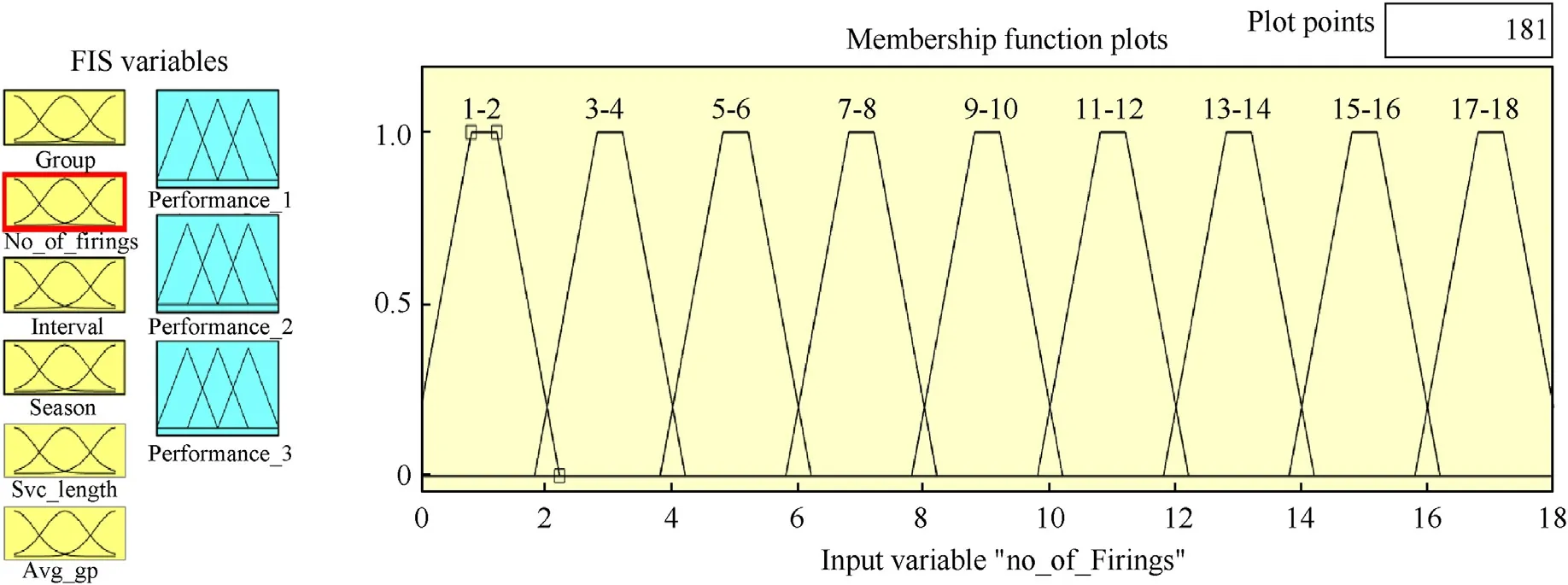
Fig.4.Input: No of Firings using trapezoidal MFs.

Fig.5.Input: Interval using gaussian MFs.
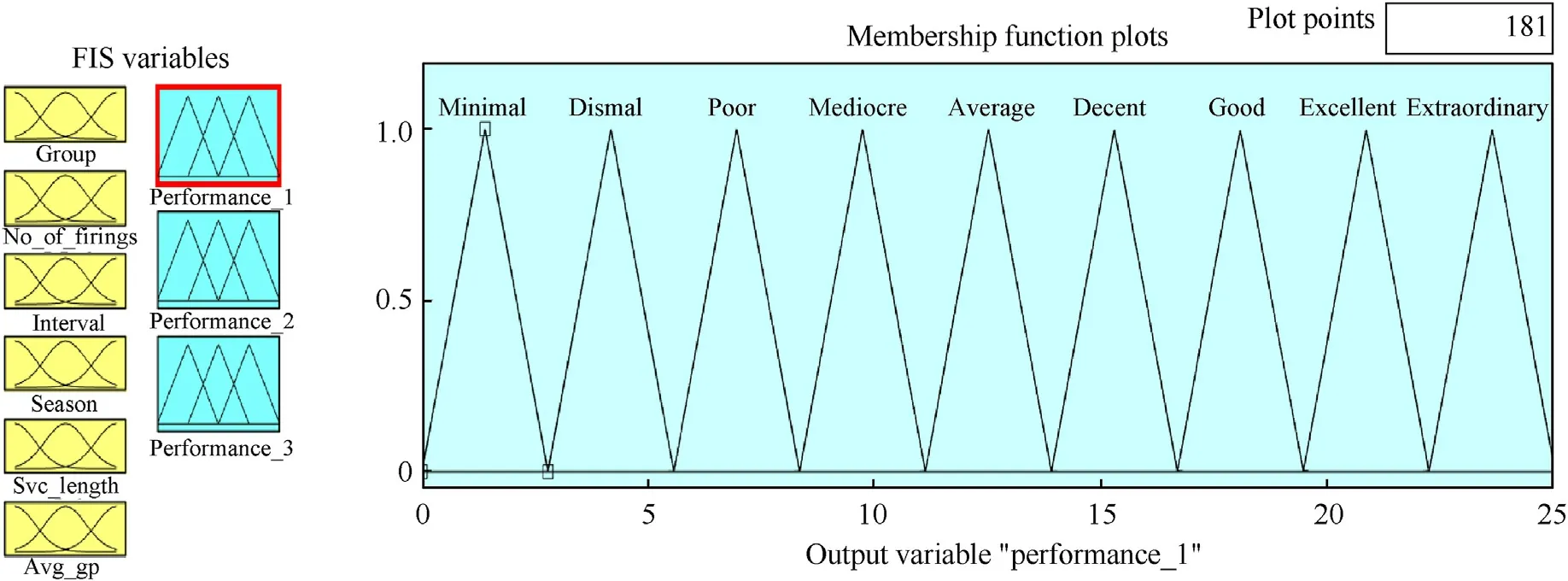
Fig.6.Output: Performance 1 using triangular MFs.
A graphical representation of the MFs used as the FLS inputs are shown below to further assimilating the idea of various types of functions.
4.2.1.5.Fuzzy rules.Fuzzy Inferencing System at the processing stage works with the rules that direct the input variables towards a generalized output.The rule base of the proposed fuzzy performance analysis model is defined in three steps;firstly,three inputs about their performance provides performance measure 1;secondly,the first and other two inputs give performance measure 2 and finally,the first and last input maps into performance measure 3.The numbers of rules were computed based on the permutation with a number of membership functions and numbers of performance measure parameters.The numbers of factors are nine and the number of membership functions that provide performance measures is three.The total number of rules,therefore,became 9×3=27.The rules are shown in Tables 2-4 respectively (see Fig.7).

Fig.7.Output: Performance 2 using generalized bell MFs.
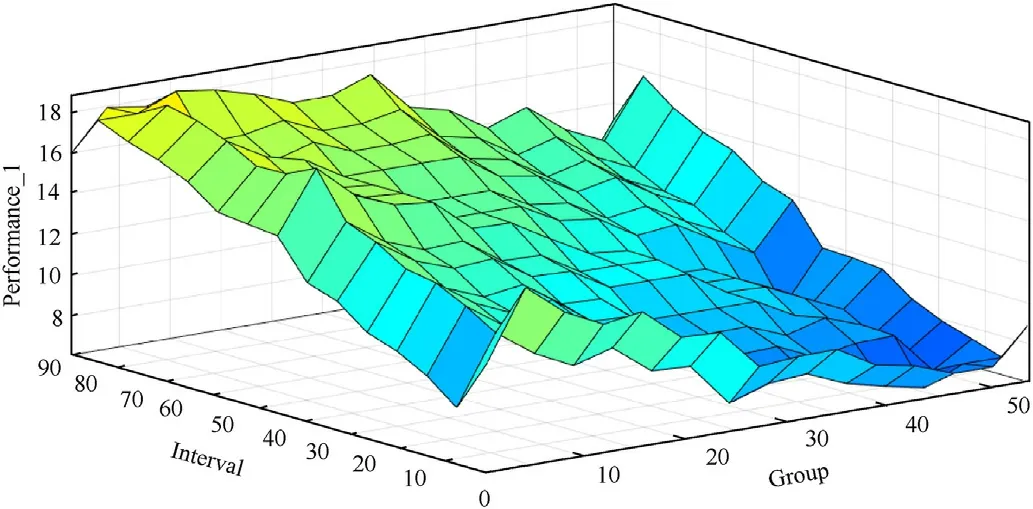
Fig.8.Interval and group vs.performance.
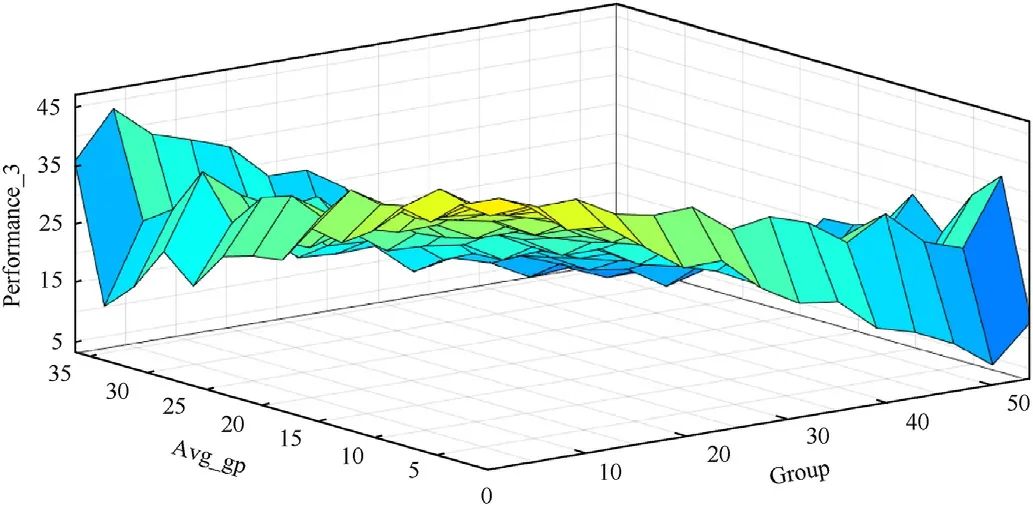
Fig.9.Average group and group vs.performance.
A selection of surface graphs showing the relationship between input and output variables are shown in Figs.8 and 9 respectively.
4.2.1.6.Defuzzification and results.The three performance measures(see Figs.4-7)obtained from the initial fuzzy model are used as inputs for the second fuzzy model.Thereafter certain new rules lead to a new calculation step to finally define the performance of the firing.Here,the centroid defuzzification is used the find the crisp performance value.The following Fig.10 shows an instance of defuzzification module in this FLS.
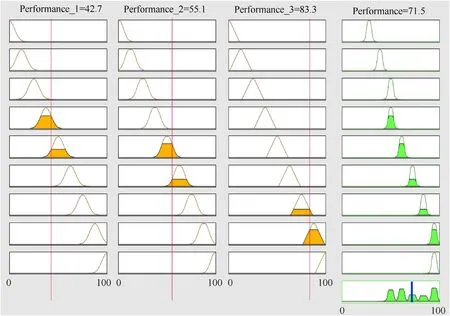
Fig.10.Centroid defuzzification method.
The total model is used in a MATLAB Simulink model and provides the required analysis of performance as a concrete value.Fig.11 provides an example of measurement of performance using the FLS in total.

Fig.11.Simulink model for Defuzzification module.
4.2.2.Performance analysis using linear regression
Performance analysis is required to enhance the mastering process in a particular field.One of the tools used to conduct the performance analysis in AI is the Linear Regression model.Linear regression helps to identify the best matches for the data points on a linear plot.As a result,it can be used to forecast output values for inputs that aren't included in the data set,with the assumption that those outputs will fall on the line.
4.2.2.1.Dataset.Practically,it is difficult to determine the future performance of a firer.But as mentioned earlier,there might be some connection between future firing performances and the number of practices,past performances,and some other factors.For convenience,the parameters selected for analyzing the performance are the number of firings conducted per single day,the interval between two firing sessions,seasonal effects,length of service of the firer,and their average group.These are the predictor data of the system.The target data are the performances obtained from the FLS corresponding to the mentioned values.It's worth mentioning here that due to some constraints for real-time data collection from the military domain,the size of dataset is limited.
4.2.2.2.Training.The retrieved characteristics are used as inputs to create a model from the data and make predictions.The dataset gathered provides two inputs to fit whereXremains as the predictor variable andYacts as the target variable.As the cost function,the Mean Squared Error (MSE) function is used,which is the average of squared error occurred between the predicted values and actual values.The model performance or the goodness of fit is checked through process of optimization.For easy understanding,the R-squared method as shown below is used to apprehend the optimization level of the model.
4.2.2.3.Prediction.The trained model can now predict future performance based on input data,thanks to the relationship between the datasets.The input data is adjusted to fit the elements of the dataset.The proportion of material that is most relevant is calculated and delivered as an output.The associated relation indicates the possible percentage of performance at a scale between 0 and 100 after pairing with theX(Predictor)data andY(Target) data.
5.Experiments and results
In order to determine the accuracy of the system,the entire experimental method was split into two major modules,namely the Firing Evaluation System and Performance Analysis of Firer.The goal was to comprehend the system's strengths and weaknesses and to suggest the changes required to improve its stability.The photographs used in this project came from a variety of military formations and real-time units.To ascertain the frequency of inaccuracies,the results of manual calculations compared to the photographs were also gathered.In addition,the firing records of each soldier were discussed,and the necessary data sets were created to conduct the trials.
5.1. Firing evaluation system
We divided the evaluation of the firing evaluation system into three parts:(i)Bullet hits detection;(ii)Calculations of groups;(iii)Error detection.
5.1.1.Bullet hits detection
The experiment was conducted to find out the success rate of the detection of bullet holes.
5.1.1.1.Dataset.The distribution of the dataset for various error types has been illustrated in Fig.12.
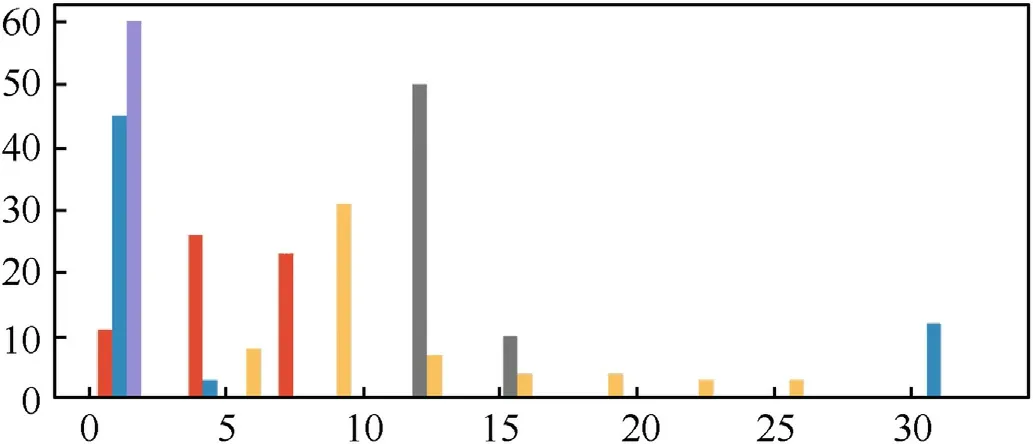
Fig.12.Error distributions.
5.1.1.2.Experimental setup.At first,the images of fresh targets were captured using a 6-megapixel phone camera at a distance of 25 m from the targets with camera stands.Then the firing was done in the standard manner i.e.five bullets grouping fire at the 100 m range.After the firing,the target Images were taken again in the same manner from the same fixed distance.In this manner,16 sets of Images were taken from eight targets.Thereafter,the SSIM module was used to find the similarity and detect the bullet holes.The results are shown in Tables 5 and 6.
5.1.1.3.Result.From Tables 5 and 6,it is clearly understandable that the program can detect all the shots quite correctly.The tables have the following columns: Serial,Images after Firing,Bullet Hits Detected (Indicated by Red),SSIM Scores (percentage),and Accuracy (percentage).The images from serial numbers 2 and 4 demonstrate that the system correctly identified a hit from two gunshots as a single hit.But after morphological processing,these are once again distinguishable.The technique yields similar results while using freshly printed target paper as well as frequently used target paper.The fact is that the bullet shots can be determined with 100% precision is a success.The proportion of similarity between the photos taken before and after firing is determined by the SSIM score.The variations in SSIM scores are caused by the image quality,the way the bullet hit,and the brightness variations between the images.
5.1.2.Calculation of groups
The images found from the SSIM module are further processed and subjected to group calculation module.The groups are only calculated if five bullet marks were found by the system.Otherwise,the system declines to calculate the results.
5.1.2.1.Experimental setup.To collect the experimental data,a 7.62 mm Sub-Machine-Gun type 1956 was selected as the primary firing weapon.A total of 8 firers were detailed to conduct firing.They fired 3 times.Only one set of data was taken for experimental calculations.
5.1.2.2.Result.The information gathered through the manual measurement method using a twelve-inch scale as well as through the suggested software is provided in the following Table 7.As a result of the system's ability to calculate results in fractions,the table displays promising states.In addition to calculating the shot deviation,the automated system also delivers results of shot grouping.As a result,it helps with figuring out the corrections needed for weapon zeroing.In order to achieve these values,a manual procedure would have taken much longer.The variation in measurement between the automatic system and the manual scoring system(A-B).is also displayed in table.A manual procedure is flawed because there may be little errors made when figuring out the center-to-center distances between the bullet shots.Due to this,two firers may occasionally achieve comparable outcomes while having little variations in their shot grouping.The software is quite useful in reducing this problem.In certain instances during the trial,the groups determined by the system were larger than the ones determined manually.Those were brought about by slight flaws in the targets' geometrical design.A 0.2-inch allowance can be added to the firers to encourage them and help alleviate the problem.

Table 7 Grouping results:Manual and software-driven.
A chart (Fig.13) is prepared to understand the differences in results more clearly.Here the various targets are listed along theXAxis andY-Axis shows the measure of grouping in inches.The green bars represent the results calculated manually and the orange bars show the results found by the Automatic Firing Target Scoring System.

Fig.13.Grouping comparison chart.
5.1.3.Error detection
In the Error detection module,both the error detection by use of ellipse and error detection by support vector classification modules were tested.The results from the system were matched with actual data to check and analyze the accuracy of the modules.Experimental setup Different sets of target data were used,where the system could easily identify the errors from analyzing the data.To tally all types of errors,the images were manipulated to make images of error shots.This was because manually it was difficult to collect images that has all types of error-biased shots.The images taken as the inputs are shown in Fig.14.
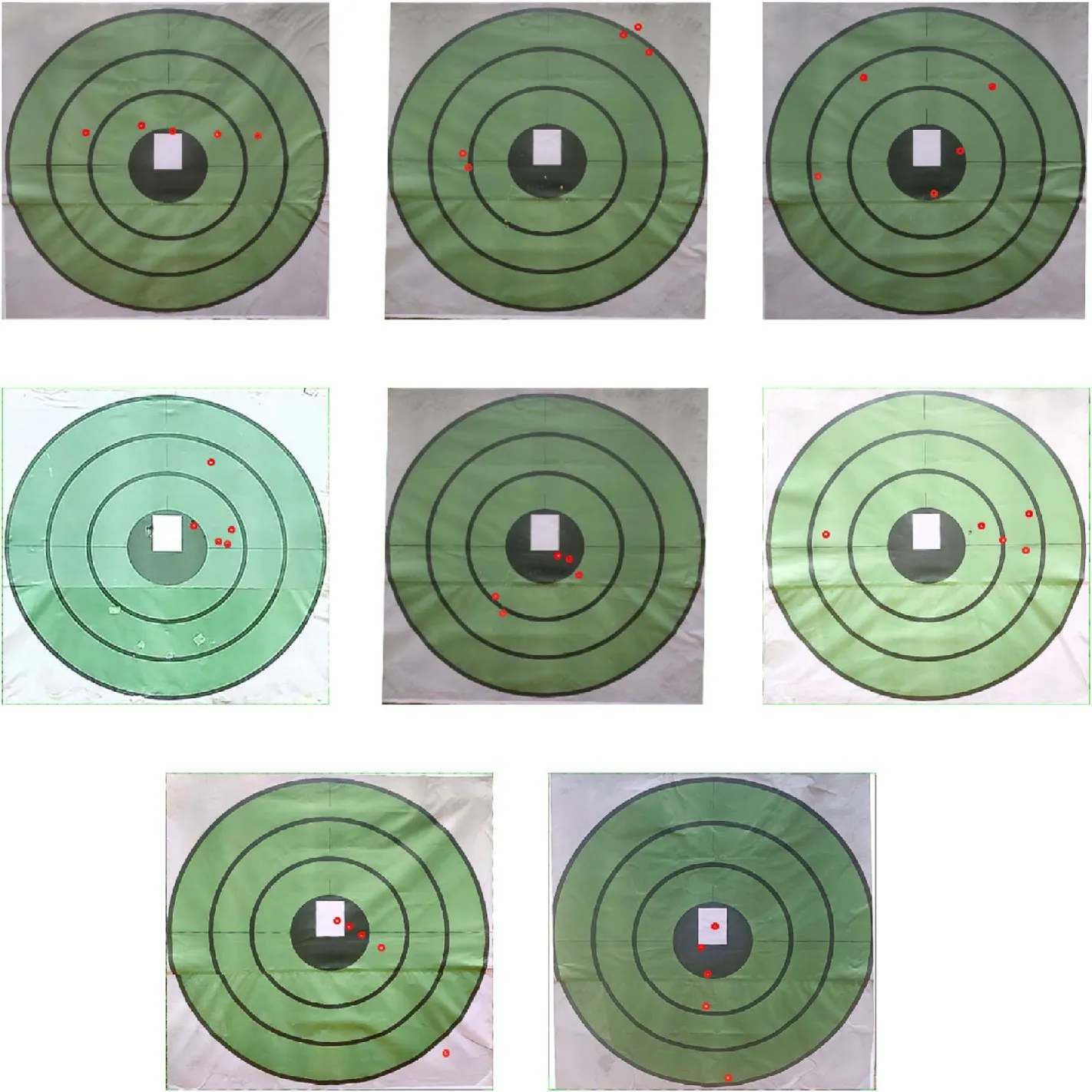
Fig.14.Error images.
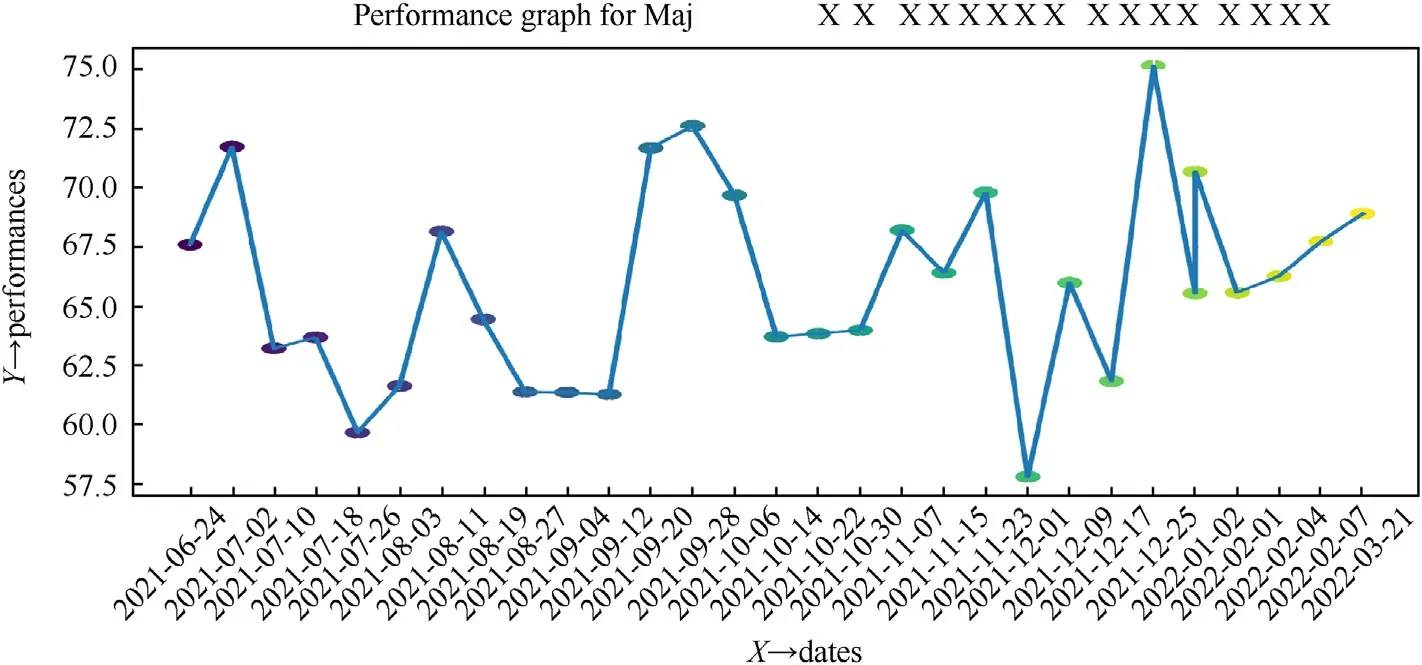
Fig.15.Performance graph 1.

Fig.16.Performance graph 2.
5.1.3.1.Result.Table 8 shows the errors detected by the system using both modules.The data indicates that there are situations where only one of the modules is able to identify the error correctly.Similar types of errors can have various firing patterns.Due to the limited amount of data,however,the machine learning component occasionally fails to detect the actual issue.Systems are occasionally created through error identification using a mathematical technique.It incorrectly conflates the impatient shot with any horizontal or vertical flaws.If both modules have the same error,only one error will be shown by the system.More than one error detected by the modules will cause both errors to be displayed.However,the success of the system is that it could identify the corresponding errors with at least one of the modules.More data sets can be fed into the system to make it more robust,which will improve accuracy.
5.2. Performance measure
To find the performance measure,the performances of an individual were fed to the system.The fuzzy system thereafter calculated the performance measure on a scale of 100.
5.2.1.Experimental setup
The factors to calculate the performance were stored in a database as numbers.These data were stored against a date to comply with real-time scenarios.The data was then analyzed by the MATLAB FIS module to calculate and store crisp results in a separate database table.Two instances of the performance measures calculated by the system are shown in Figs.15 and 16 respectively.
5.2.2.Result
After conducting the result,it is found that the performance measure changes differently in case of variations in the factors affecting the performance.The service length and the interval between two consecutive firings have very less effect on the overall performance of the firer.But the season has a remarkable impact on the firing performance as it is related to sunlight and vision.The most influential factor among all these is the grouping and average group.Because a slight change in the group gets the overall performance measure affected.However,the results are satisfactory as the graph shows the ups and downs in an individual's performances embedded with specific factors of firing.The graphical form can be analyzed to understand the standings of a person in case of firing.
5.3. Performance analysis
Performance analysis is important to take important decisions regarding the employment of a firer.The performance analysis module checks the available data related to a firer and can be utilized for future prediction.Depending on the analysis,the decision-makers can take viable decisions and precaution measures.
5.3.1.Experimental setup
For experimental purposes,we have taken data of eighteen military personnel and put them in the prediction module of the system.For the analysis,we have taken the records of the Number of firings,Interval,Length of service,and Average Group from the individuals.The table (Table 9) below shows the corresponding predicted performances in relation to the provided data-set.

Table 9 Performance analysis.
5.3.2.Result
The Results display the expected performance of the following firing based on the firing history and other variables.Based on a firer's recorded results,the system anticipates the data by using machine learning methods.If the firer conducts firing more regularly and records their continuous performances in the database,the prediction's accuracy will only rise.However,if and only if the shooters can constantly fire,making very small in-size grouping rounds,the entire prediction process can produce superior results.In order to accurately determine the percentage of the performance tables,the data set must also be robust.Good performers can be identified and hired as appropriate if this procedure is sorted according to performance.
6.System development
6.1. System architecture
The system has a total of four integral components.
6.1.1.Component 1
The first components consists of a system that includes a good quality camera and a wi-fi connection.The camera is connected to the core system with wi-fi network to capture and fetch firing images to the system.
6.1.2.Component 2
The second components is the software itself which is interconnected with other parts.It consists of the software module to calculate and analyze the data collected from camera and the database and provide necessary results as its output.
6.1.3.Component 3
The next one is the database system that provides a robust tool to store necessary data.
6.1.4.Component 4
The fourth components is the output monitor display or the printing machine (preferably the colored one) to show on screen data or to print out the relevant results.
The functional system architecture is shown in Fig.17 which elaborates the ins and outs of the system precisely.
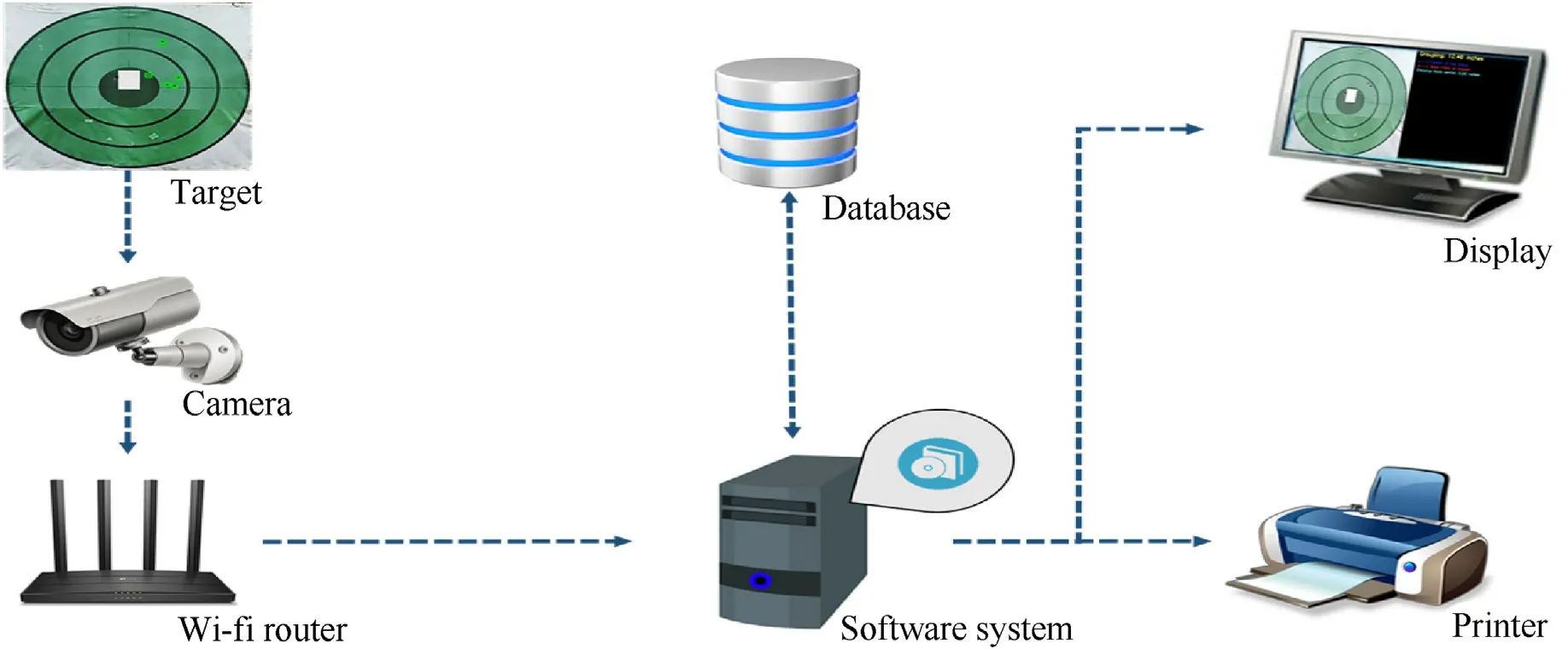
Fig.17.System architecture.

Fig.18.(a) Unit Selection Page;(b) Registration page.

Fig.19.(a) Target compilation page;(b) Target with firing result.
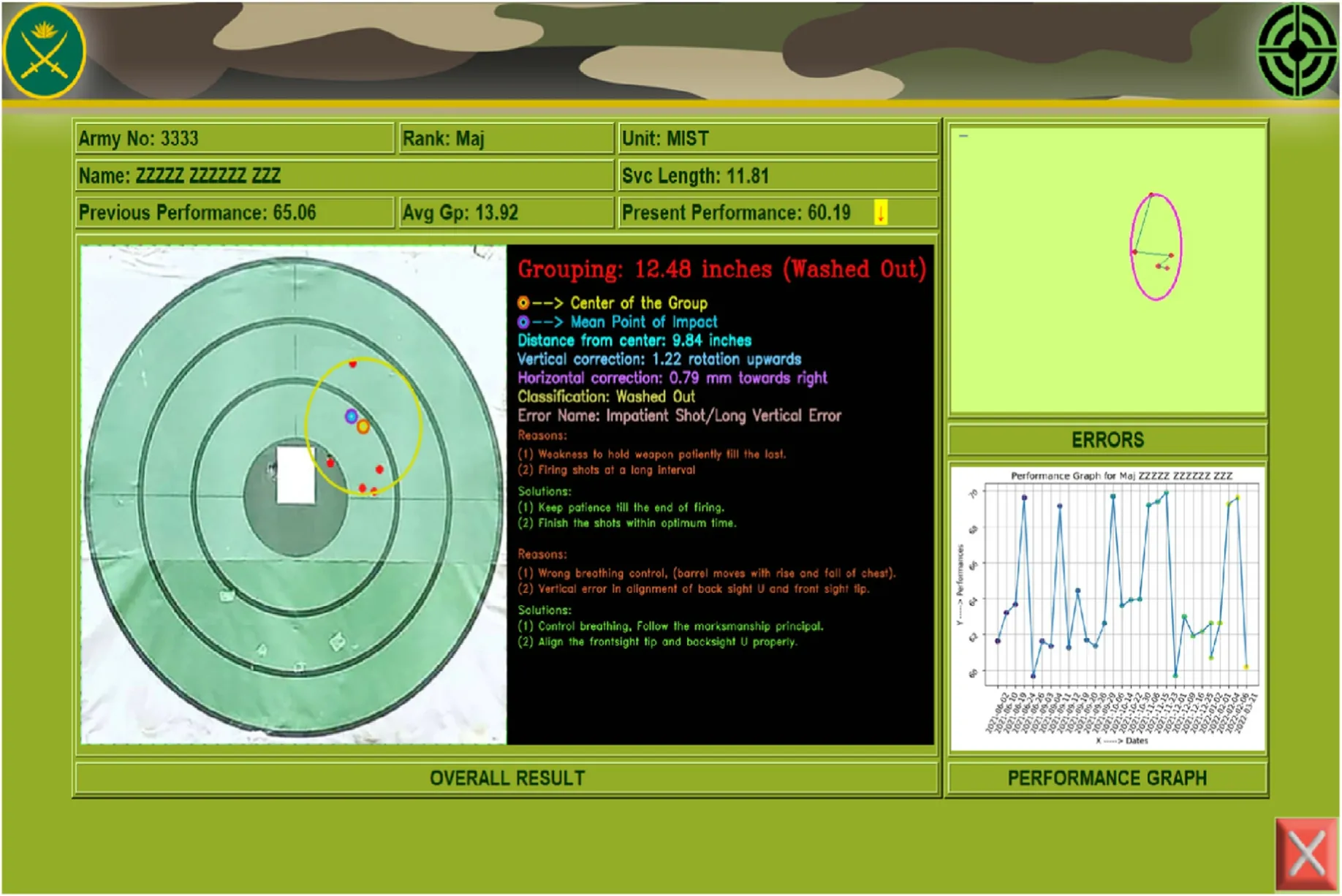
Fig.20.Individual firing results.
6.1.4.1.Platform used in the system.The platform of the whole project is a programming language based application that can be used for processing the input and generate necessary outputs.The application is made using a robust language namely Python programming language with its various modules and libraries.
6.1.4.2.Front end.The Python tkinter library is used to build the front end of the system.The visuals are kept soothing to make the users adaptable with the software.The built in modules of tkinter library is utlized fully the develop the total interface of the software.
6.1.4.3.Python libraries.Python's library is very extensive,offering a wide range of facilities.It contains various built-in modules that provide standardized solutions for many problems that occur in everyday programming.Some of these modules are explicitly designed to address specific artificial intelligence and image processing problems.The project contains a lot of Python modules,however,the main libraries pertinent to the implementation of the project are mentioned here:
6.1.5.Computer vision 2
The Computer Vision 2 or the CV2 library is used mainly for the image processing part.All the image processing modules required for image manipulation is taken from this library.
6.1.6.Scikit image
The Scikit Image or skimage library is utilized in the structural similarity index measurement (SSIM) process.
6.1.7.Numerical Python
Numerical Python is used for various types of mathematical calculations.This library is commonly known as numpy library.Scikit Learn.Scikit Learn library provides an wide range of machine learning methods.The Linear Support Vector Classifier (SVC)module is used in the error prediction part and the Linear Regression is used in the performance prediction part.
6.1.8.Mathematical Plotting Library
As the name says,the Mathematical Plotting Library is used to generate various plots on the graphs.
6.1.8.1.Back-end.For back-end data storage the SQLite database library of the Python programming language is used.It provides a workable data storage system related to the project and provide a greater range of possibilities to upgrade it further.
6.1.8.2.MATLAB FIS.To implement the FLS,the FIS module of MATLAB software version 2021a has been used.The MAMDANI type interface is used to formulate the output of the system.The system as an executable file is integrated with the Python module afterwards to provide fuzzy outputs as a part of the project.
6.2. UI screenshots
The following figures(Figs.18-20)consists of screenshots of the user interface for the titled project.
7.Conclusions
The paper presents three aspects related to small arms firing.Firstly,it proposes an automated system to calculate points earned by the firer along with error detection using image processing and machine learning techniques.Structural similarity index and adaptive algorithm are used in the image processing parts to calculate firing scores.To find out the errors of the firer,machine learning algorithms and ellipse recognition-based algorithms are used.Secondly,the system carries out performance analysis of the firer using fuzzy logic system.Thirdly,the system carries out performance prediction using linear regression model.
The development of firing efficiency is a continuous process for military personnel.Units and training institutions also conduct practice firing regularly to upkeep the firing efficiency of their men.The development of an artificial intelligence-based firing skill evaluation system will play an important role in assessing the performance of a firer,analyzing his mistakes,and guiding him towards necessary correction.The performance predictions of a firer will assist the officers to employ his men at the right place for the right job.Moreover,the system will augment the trainer and coach in performing their responsibilities.It will resolve the issue of shortage of skilled-trainer,enable lifelong record keeping of firing history,and decline the rate of fatigue and effort involved in a manual or semi-automatic process.
Declaration of competing interest
The authors declare that they have no known competing financial interests or personal relationships that could have appeared to influence the work reported in this paper.
杂志排行
Defence Technology的其它文章
- Investigation on the ballistic performance of the aluminum matrix composite armor with ceramic balls reinforcement under high velocity impact
- Dynamic analysis of buried pipeline with and without barrier system subjected to underground detonation
- Influence of liquid bridge force on physical stability during fuel storage and transportation
- Adaptive fuze-warhead coordination method based on BP artificial neural network
- Cooperative multi-target hunting by unmanned surface vehicles based on multi-agent reinforcement learning
- High-Velocity Projectile Impact Behaviour of Friction Stir Welded AA7075 Thick Plates
